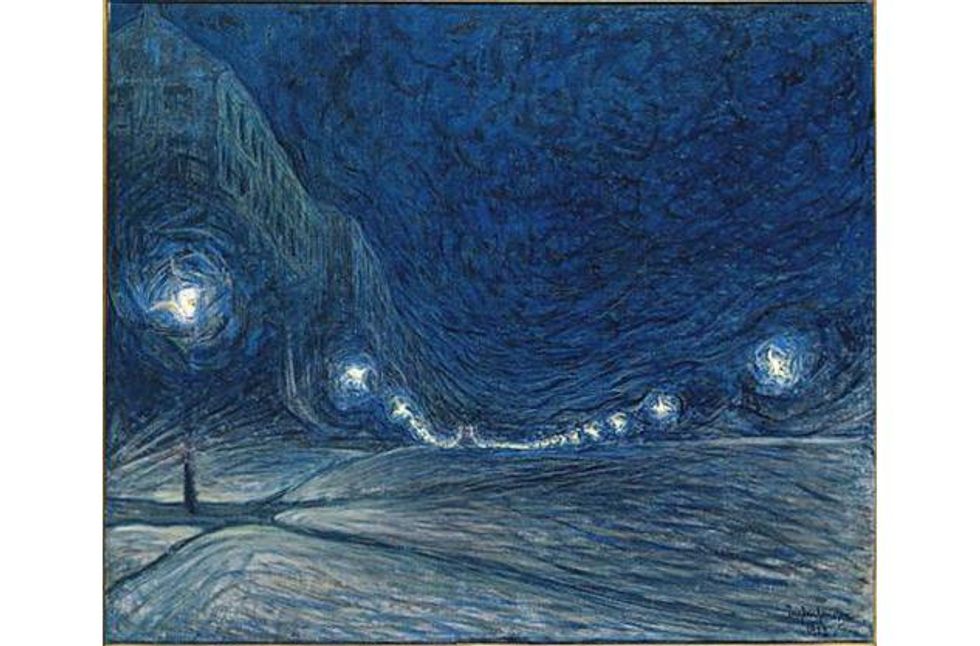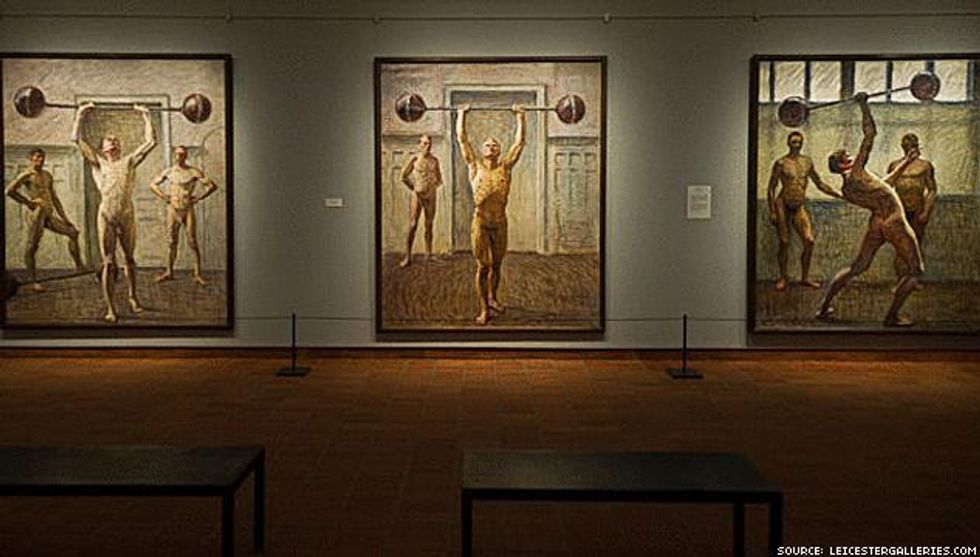
The sense of freedom Swedish artist Eugene Jansson must have felt when he turned from blue landscapes to nude male gymnasts and sailors pulsates in his artwork.
March 09 2013 5:00 AM EST
xtyfr
By continuing to use our site, you agree to our Privacy Policy and Terms of Use.

Above: Naken yngling (Naked Young Man)
Jansson (March 18, 1862 - June 15, 1915) could be described as the first gay Swedish painter. His academic painting career started fairly conventionally as he began studies in 1878 at Slojdskolan (later known as the Technical School). However upon meeting painters returning from France, he joined a Swedish avant-garde movement known as the Opponents who showed their work independently. Jansson stayed with the group which later became known as the League of Artists to its conclusion.
Jansson travelled rarely evidenced by his paintings of mostly Stockholm scenes. He lived with his mother and was a recluse, somewhat owing to a hearing loss that resulted from a childhood illness. His work was somber, mystical, and mostly blue. An important influence was Edvard Munch.
As his sense of isolation increased he painted less and less and ceased exhibiting his work. In 1907 he began painting again, and his output was prolific. He concentrated on the male nude, a subject he had always wanted to explore, but could not until he was established and financially secure. His desire to depict the naked male form coincided perfectly with the rise of the Vitalism Movement in Northern Europe.
In 1907 Jansson's new direction was launched with a monumental painting, Naken yngling (Naked Young Man). It depicted his close companion Knut Hyman in the gymnasium. Jansson and Nyman became friends at the Naval bath-house in Stockholm, where Jansson was a visitor. The two men shared a home in Jansson's studio until 1912.


Sources:
Online Galleries
The Living Room
Wikipedia
Sel-portrait
The open-air bath house
Charlie Kirk DID say stoning gay people was the 'perfect law' — and these other heinous quotes